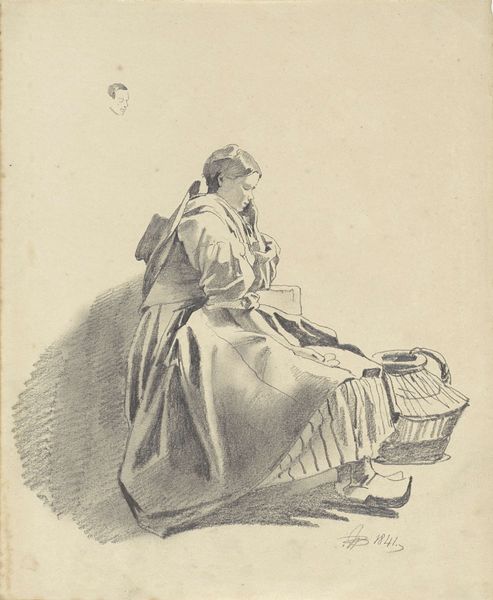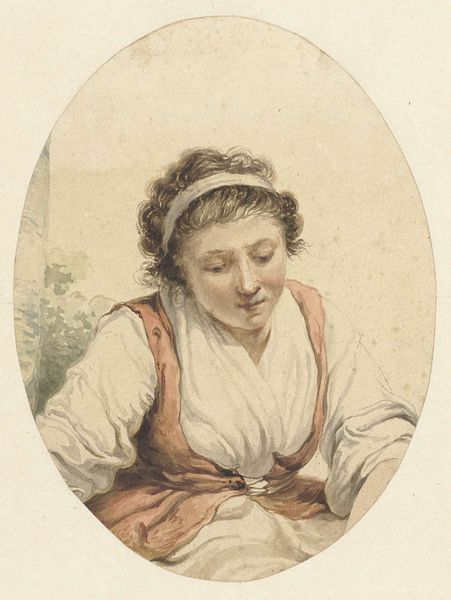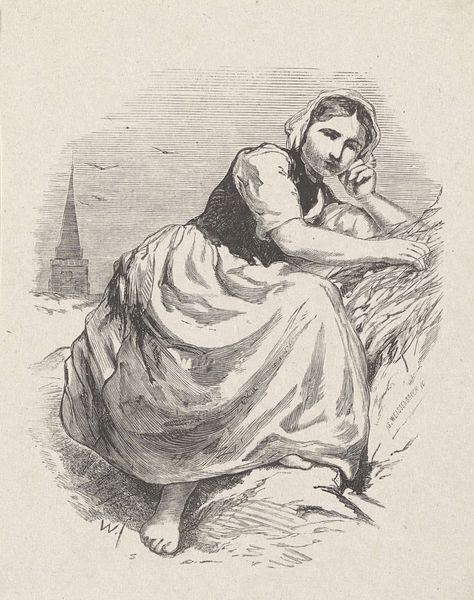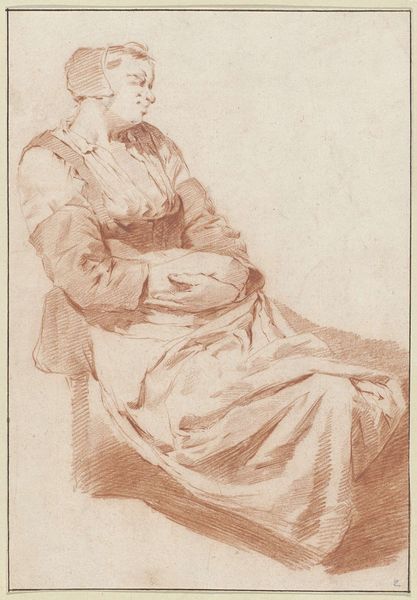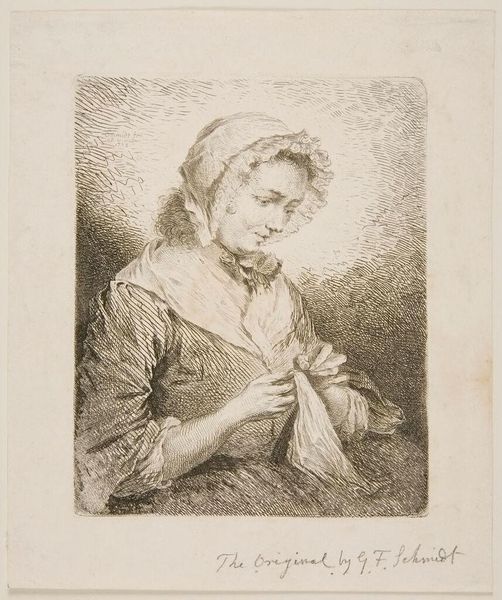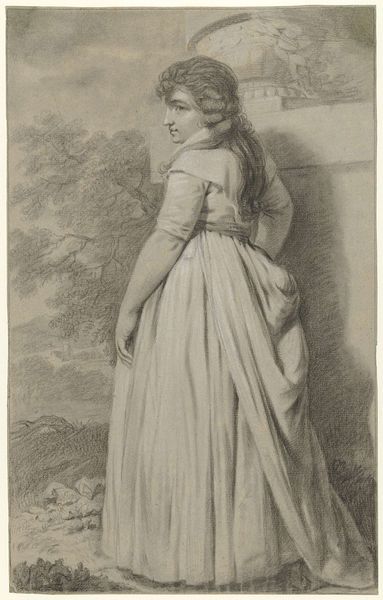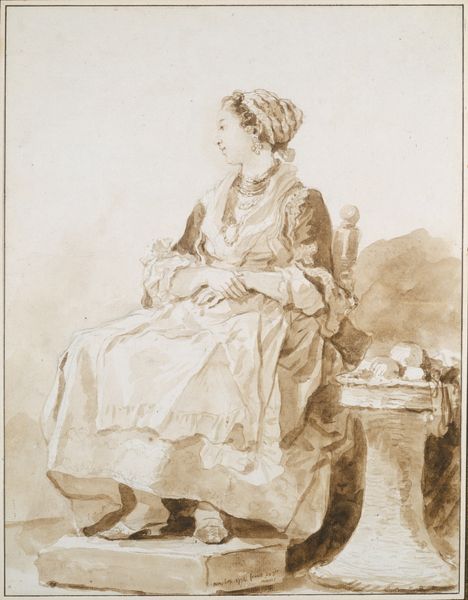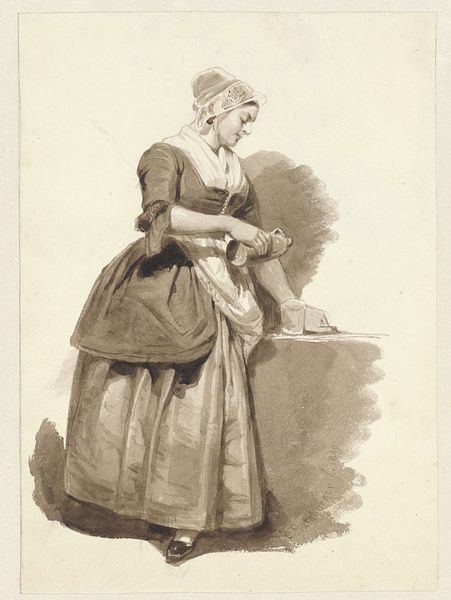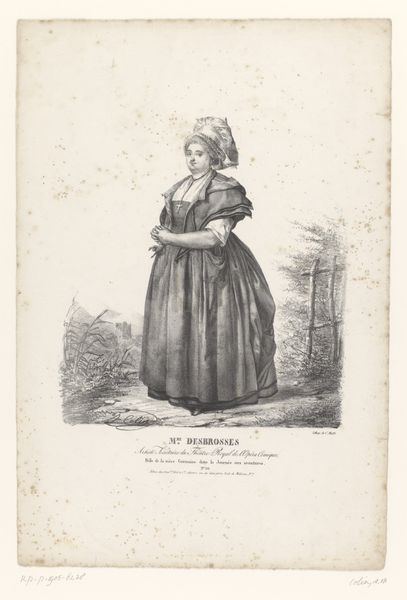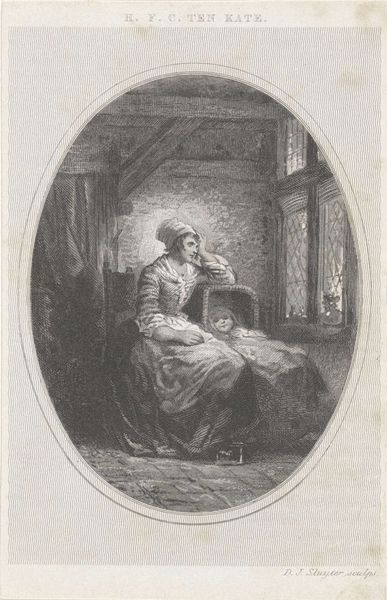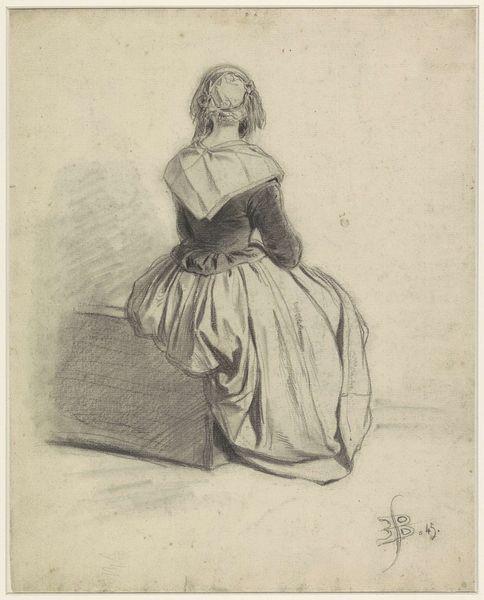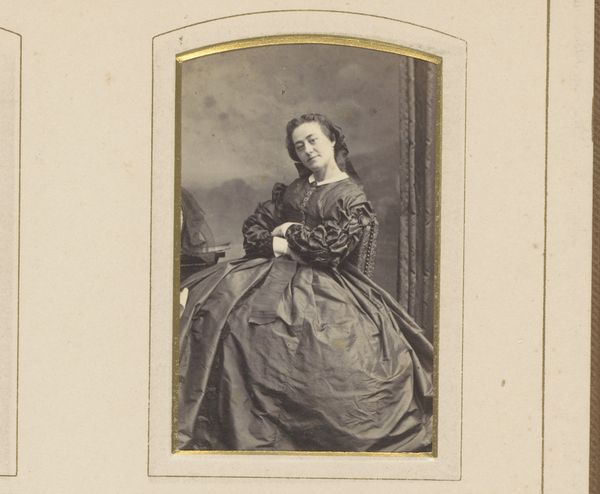
Fotoreproductie van (vermoedelijk) een prent van een jonge vrouw c. 1860 - 1880
0:00
0:00
Dimensions: height 105 mm, width 60 mm
Copyright: Rijks Museum: Open Domain
Curator: This intriguing piece, housed here at the Rijksmuseum, is titled "Fotoreproductie van (vermoedelijk) een prent van een jonge vrouw," which translates to "Photographic reproduction of (presumably) a print of a young woman." Dating from roughly 1860 to 1880, it gives off quite a moody vibe, wouldn’t you say? Editor: Melancholy. Utter melancholy. The woman seems absolutely lost in thought, maybe regretting a love affair, who knows. The palette accentuates her quiet despair... and the oval frame just makes it all feel a bit claustrophobic. Curator: It is, indeed, very interesting. Note that this photographic print takes the form of what is supposed to be a reproduction of an existing print, but its origins and what it depicts remain uncertain. This "presumed print," captured through the lens, positions itself within an aesthetic and cultural dialogue—linking painting to printmaking, and eventually to photography. Editor: It’s like a game of telephone, visually! Starting as one thing, and transforming, filtered through different interpretations. Speaking of which, there is a Romanticism to it too, wouldn't you say? A celebration of a heightened emotion, dramatic light... and the rural setting is a tell. I can hear Lord Byron in this image, practically reciting poetry about lost causes! Curator: Precisely! Romanticism deeply permeates genre painting. Also, notice the visual cues that reinforce ideas about idealized beauty. Editor: The details! Of course, you'd be keen on those! It is so fascinating to think that photography at the time allowed the replication and democratization of such representations, right? Making high art available to the masses through reproduced prints, and those very prints made more widely accessible by the means of photography. The hat looks a little jaunty, perhaps it represents a future the woman no longer sees for herself? Curator: It certainly offers avenues to think about social class. Before the advent of photographic reproductions, such images were exclusively enjoyed by the elites. Photography granted access to imagery for many that might not otherwise afford it. An artistic experience, for all. Editor: That context really deepens the picture for me. To know that what seems like an image of private despair carries broader social implications... fascinating, to put it lightly! Curator: A moment of pensive introspection indeed, and quite fitting given all this visual and historical symbolism. Editor: I agree, knowing about the broader cultural shifts tied to its creation makes her individual plight even more compelling.
Comments
No comments
Be the first to comment and join the conversation on the ultimate creative platform.
